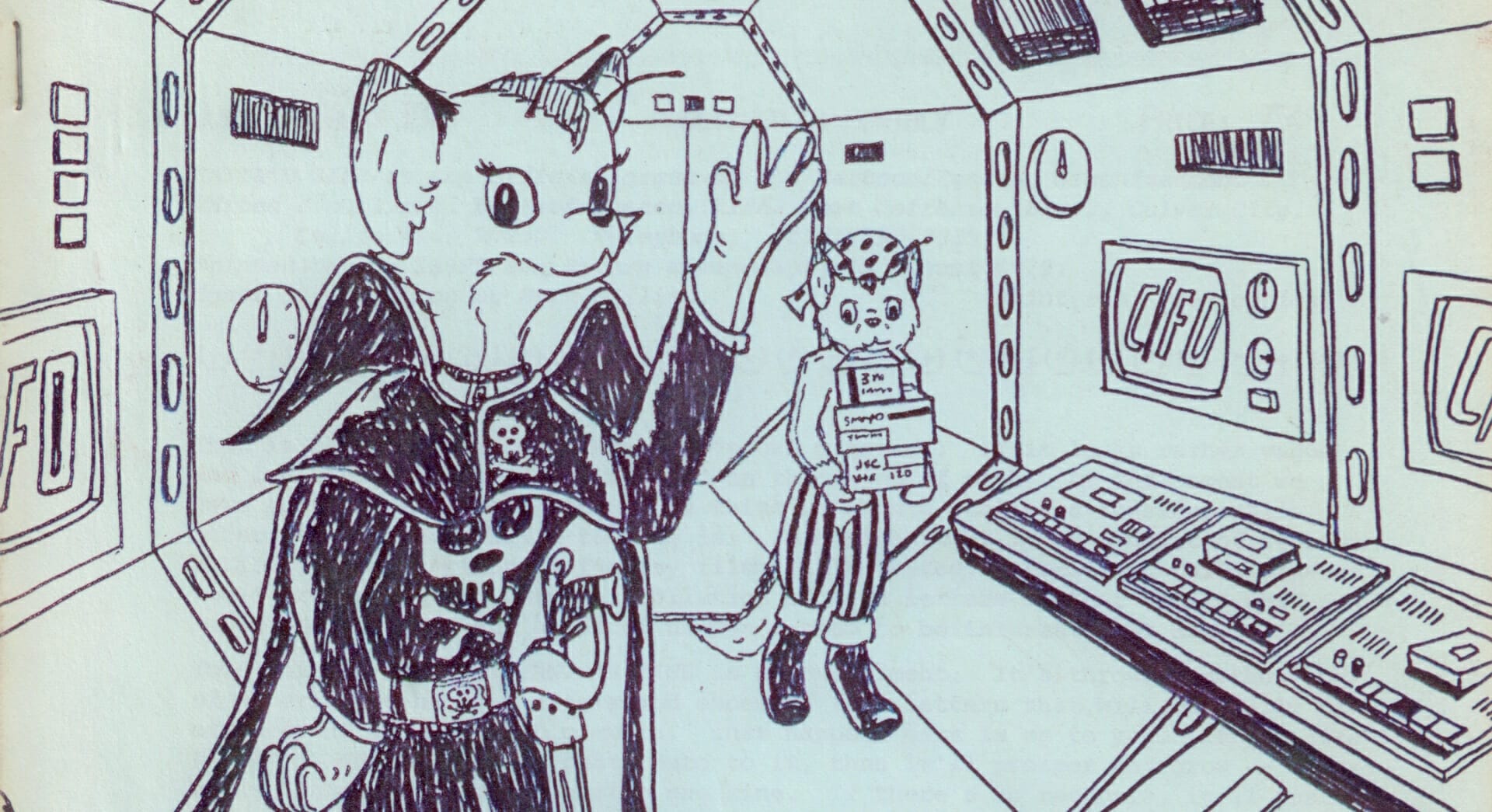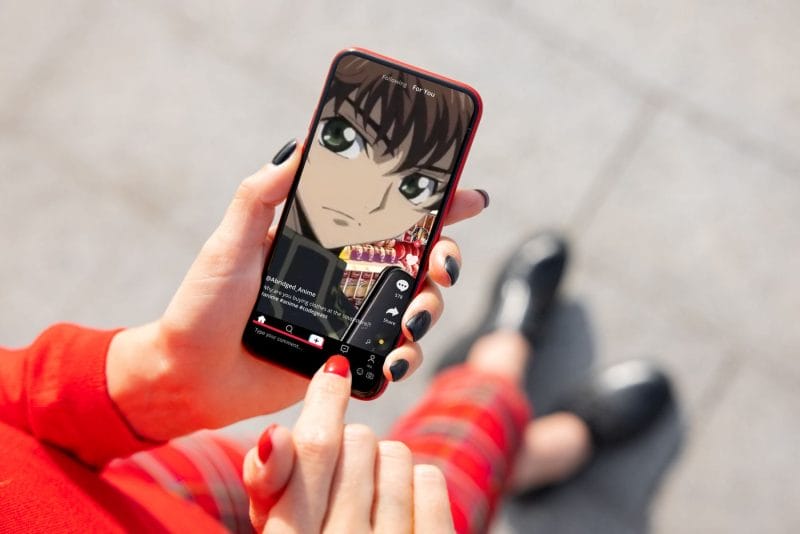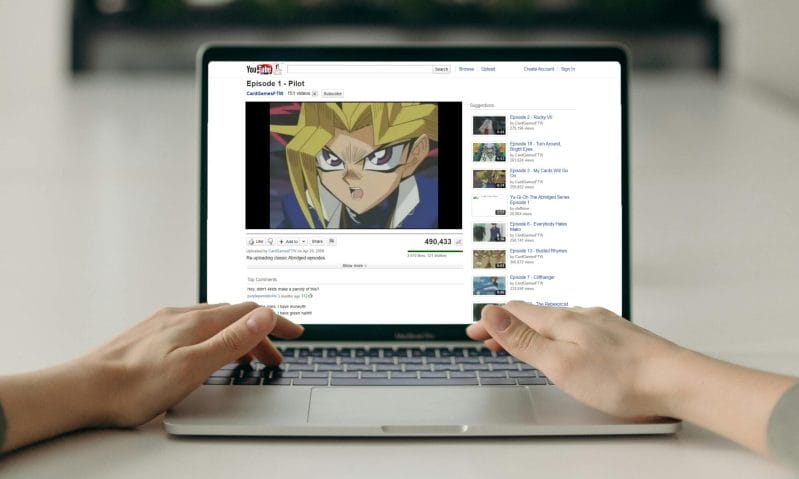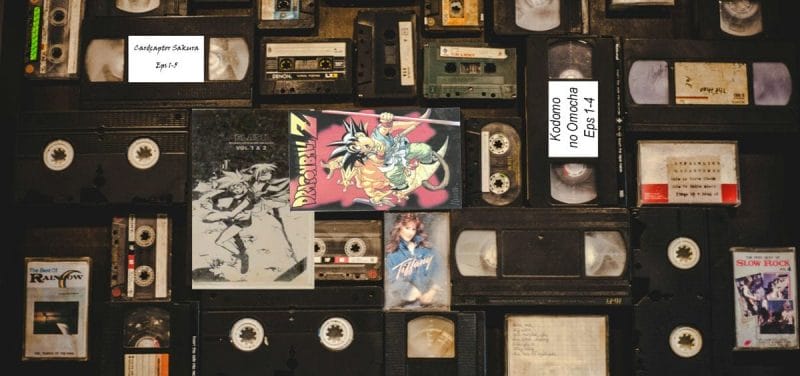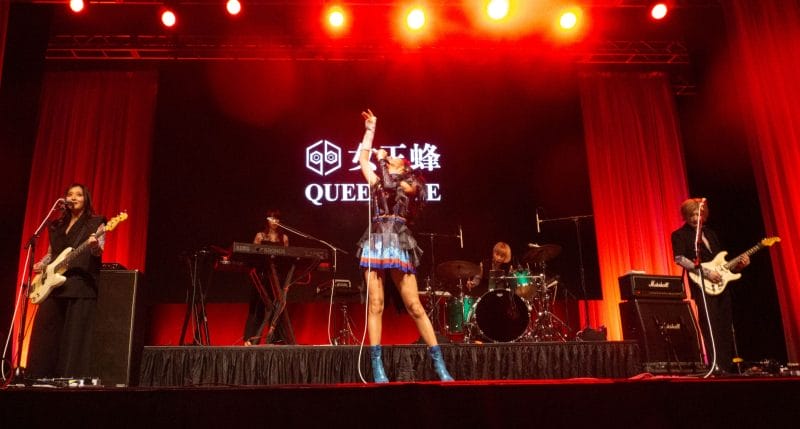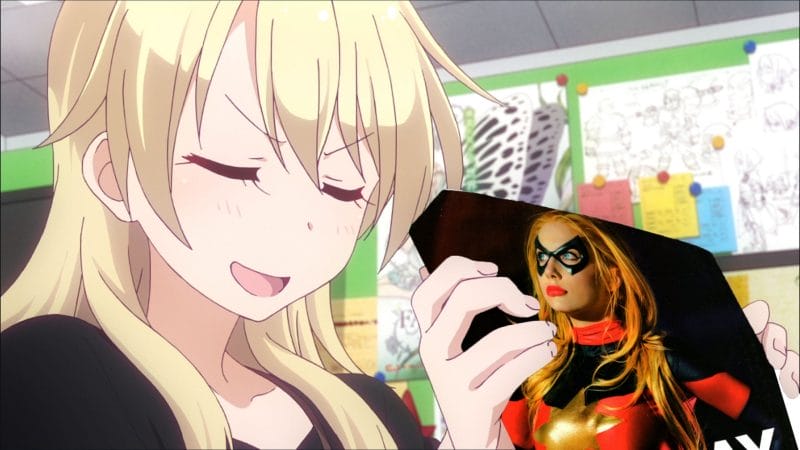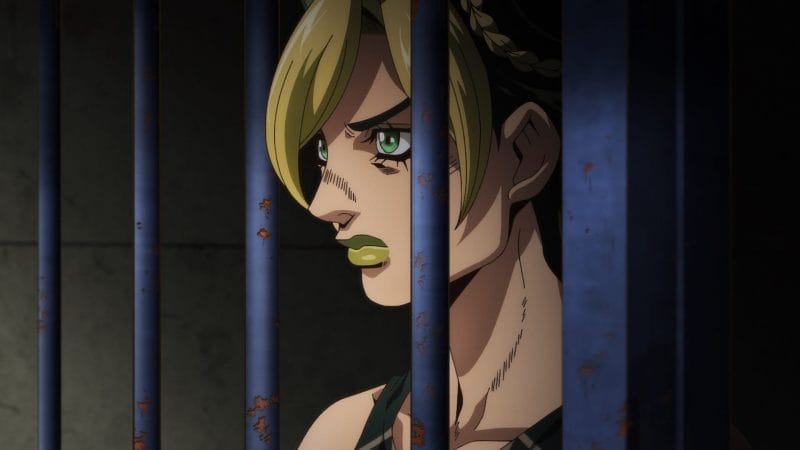In late 1975, a new technology took North American television by storm. The first consumer VCRs began to hit the market, allowing fans to record their favorite shows and relive moments that, until then, had been little more than ephemera for those lucky enough to be in the right place at the right time.
The timing couldn’t have been better for our fledgling fandom. On March 20, 1976, super robot series Brave Raideen aired—with subtitles!!!—on Japanese community channels across major American cities. The show excited cartoon and genre enthusiasts who managed to catch them in broadcast zones, including Fred Patten, Mark Merlino and Wendell Washer. These three friends, all members of the Los Angeles Science Fiction Society (LASFS), were so enamored with Brave Raideen that they began hosting regular screenings of anime at the Society’s meeting hall. Within a year, their fellowship grew to include Judy Niver, Robin Leyden, and so many others that they decided they would form their own club. Dubbing it the Cartoon/Fantasy Organization, or C/FO for short, they held their first meeting at the LASFS clubhouse in May 1977.
Thanks to new technology, hard work, and interest, the club flourished, and two years after its creation, the C/FO embarked on an ambitious attempt to explore the nascent American anime fandom. Inside the first issue, Fred Patten greeted members with a one-page letter to the audience. “This initial issue of FANTA’S ZINE is an experiment,” he wrote. “What happens next is up to you.”
The message was clear: the fate of the bimonthly publication would rest solely upon sales of subsequent issues. He laid out the financial costs associated with publication and article submissions, before closing the statement with his signature.
Basically, business as usual.

But the remaining seventeen pages don’t follow the typical magazine format. There are no feature columns in the traditional sense. Rather, each “article” was made up of letters from the C/FO’s members, carefully arranged to tell colorful stories about their experiences in what was still quite an obscure fandom.
In some letters, fans painted vivid pictures of the emerging fandom scene. Some celebrated the fact that they could actually find anime on TV; others discussed the ways they shared their passions with others. “I finally found a channel that has Battle of the Planets in the morning at 6:30 so I’ve started taping shows again,” remarked New Yorker Sandy Busch, before adding that she and her friends “have Battle of the Planets fever.” She went on to say that “[w]e write our own little stories and have drawings all over our rooms.” In a follow-up letter, Busch asked “Do you know if they’ll be putting BOTP back on again?”
Ralph Canino, Jr., a member from New York, described how he matched the eighteen episodes from the United States run of 8-Man to their places within the Japanese version’s 56-episode run, with the aid of a Roman Album fan book.
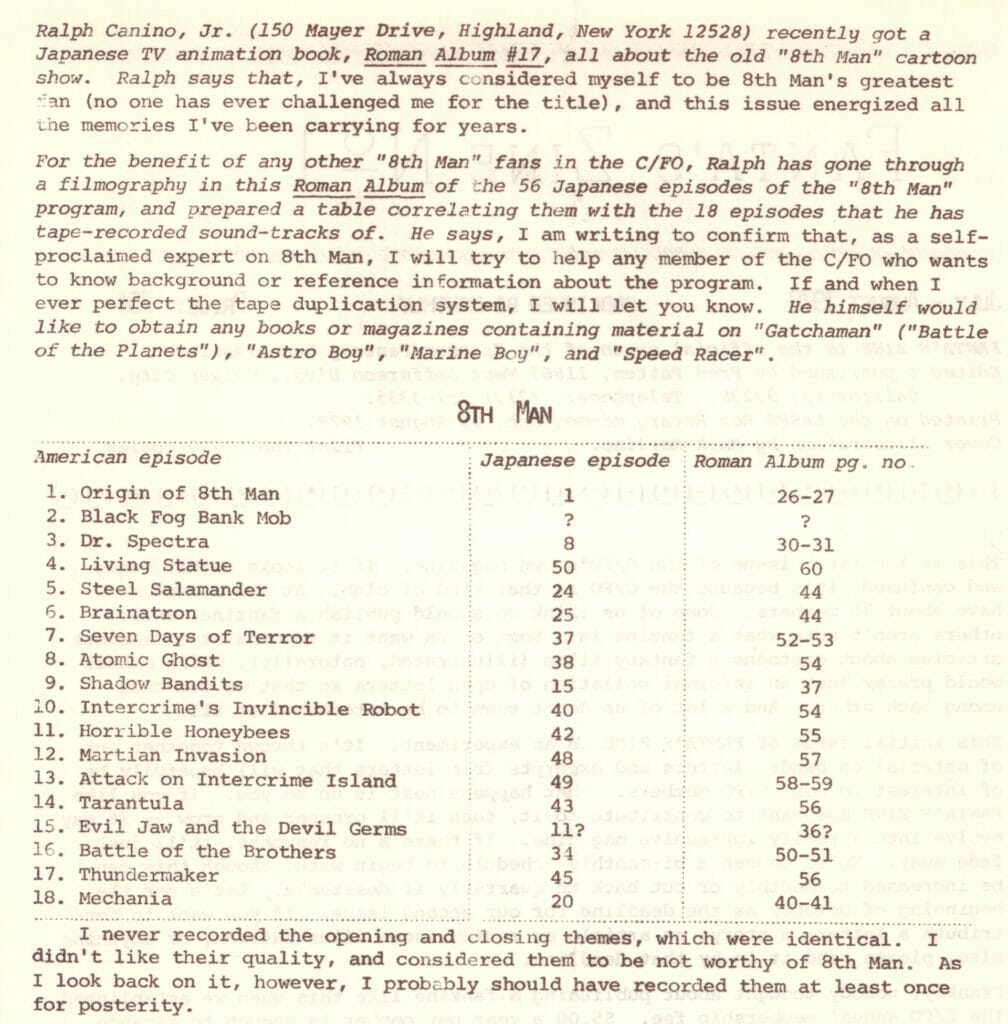
Misao Kuze, a Tokyo resident, recounted a recent homecoming to Kyoto with Los Angeles Times journalist Kevin Thomas. She gushes over their experiences watching kabuki, touring the Shochiku Ofuna movie studio, and bookends the tale with anecdotes about American movies she saw, including Superman and Alien.
Ann Nichols, a member from Arizona, recounts her discovery and growing adoration of Battle of the Planets. She opens with her rules for a great cartoon (and why Astro Boy fits the bill), then laments her inability to descramble HBO to watch Speed Racer reruns.

On January 12, 1979, Nichols discovered Battle of the Planets, Sandy Frank’s heavily-edited adaptation of Tatsunoko’s Gatchaman. Her joy is short-lived, though, as her local network dropped it later that month. Undeterred, she began to acquire Japanese books and magazines, piecing together information about the original work from articles and photo spreads, which she then shared with C/FO members through letter correspondence until July 21, 1979.
Reading it back, one can almost pinpoint the moment she realized that the original Gatchaman was a much different beast. “I’ve rather suspected that Zark’s reassurance that everyone got out of those doomed cities was a sop to American critics,” she dryly states.
Possibly the highlight of the publication is a full-page comic by Disney animator Wendell Washer. The twelve-panel gag strip features his characters, Esau and Jacob, as they argue the possibilities of “lifting a hole” before shenanigans ensue.
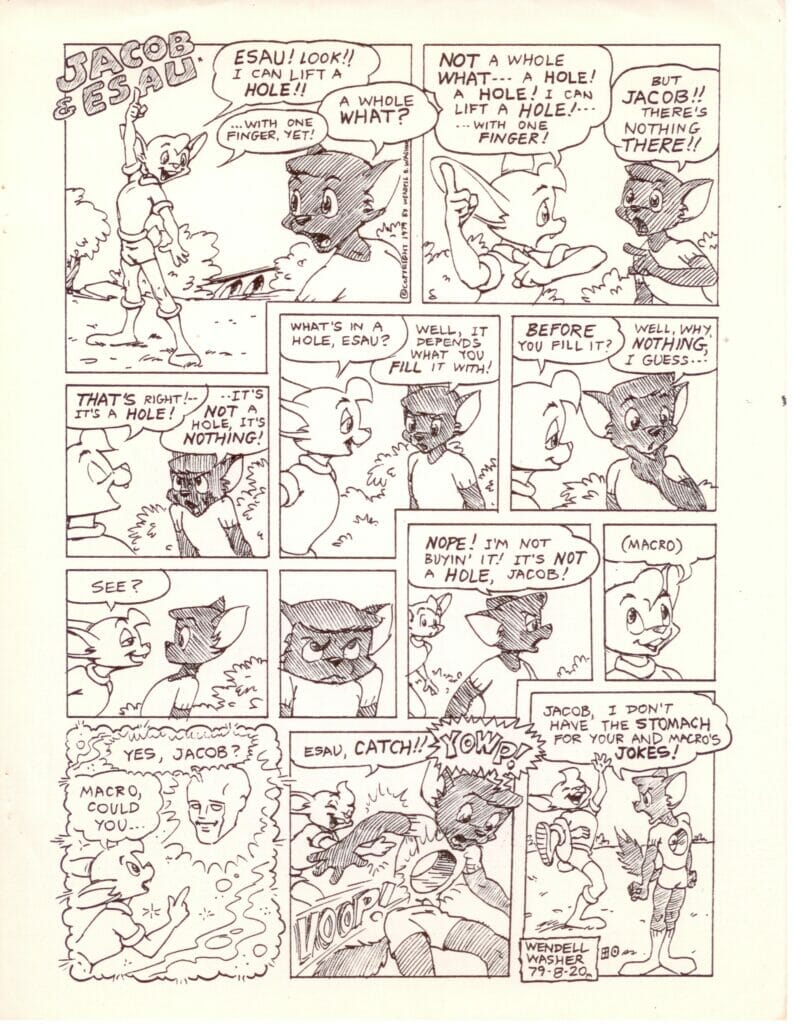
While far from what one would expect in today’s fragmented age of five-minute reads and competing for subscribers, Fanta’s Zine’s maiden issue gave us a glimpse of what was to come for our modern anime community. Each volume collects personal tales from fans around the world, coming together over a medium they adore. But, more than that, it’s difficult to ignore the sheer sense of hope behind each anecdote, experience, and gripe contained within. Those small sparks of ceaseless ambition and communal kindness have come to define much of the fandom we enjoy today.
International anime fandoms continue to grow, and Japanese art now reaches across the globe. Still, the internet can take as much as it gives, leaving us feeling more disconnected than ever. These letters offer a small comfort that no matter where we land in history, we are never truly alone.
Works Cited
Patten, Fred. “This Month in Anime History: March 1976—The First Giant Robot Anime, Brave Raideen, Comes to American Television” NewType USA, Mar. 2004, p. 54. Volume 3. Issue 3.
Patten, Fred. “How Home Video Created Anime Fandom |.” Cartoonresearch.com, cartoonresearch.com/index.php/how-home-video-created-anime-fandom. Accessed 3 Mar. 2023.
Merlino, Mark. “A Brief History of the Cartoon/Fantasy Organization, America’s First Anime Fan Club — by Sy Sable.” Dogpatch Press, 28 Apr. 2020, dogpatch.press/2020/04/28/history-cartoon-fantasy-organization.
The first issue of Fanta’s Zine is currently available to read on the Internet Archive.


